Physician burnout is a real concern amongst the healthcare community; motivation is drained out which is the main propelling force for the deliverance of quality healthcare. Symptoms of the burnout include;
- Patients being unsatisfied from the services rendered
- Drop in the quality of care offered to the patients
- High redundancy rate, both for the physicians and the staff
EHR systems have been created to lower the workload of the physicians and streamline the workflows of their practice. Since the implementation of the HITECH Act in the year 2009, the use of Electronic Health Record systems has been made mandatory by the Centers of Medicare and Medicaid services. Different solutions are offered by vendors with regard to EHR systems; some offer round the clock support services, some might even promise the stability of their services to be rock solid etc. Confusion is created due to the array of services being provided by the vendors. Physicians tend to purchase the EHR system which is not suitable for addressing the needs of their practice. Often spending thousands of dollars on a product which they don’t want. Decision making can often take time and delay other important tasks which a physician needs to take care of.
So how should a physician choose an EHR system for his practice?
The following method is sure to help:
- Requirements listed down:
The requirements needed to be fulfilled are:
- Patient portal integration
- Availability of speech to text technology
- Support for new treatments such as Immunotherapy
- Clinical Decision Support Tools (CDS)
- Computerized Physician Order Entry (CPOE)
- Specialty support: Oncology, cardiology etc.
Attention needs to be given to the struggles of the practice against the workflows being executed; whether it is the documentation taking up a lot of time of the physician, or the interoperability feature not functioning properly etc. Such issues need to be kept in mind while making the selection of an EHR system. The staff is a very potent factor in the successful implementation of the software. They need to be consulted regarding the EHR and its selection; since they handle the tasks of the front office etc.
- Do your homework, conduct your own market research:
- Reading through magazines and searching online is indeed hectic, but has its rewards. The information gained through the reading is worth all the effort; regarding the specifications of the products, user reviews, availability in every state etc.
- This first-hand knowledge is the secondary research conducted by the physician; which includes the pricing, the after sales service etc.
- By gathering a large amount of data on the product, the buyer really knows what he’s getting himself into.
- The product knowledge about its specifications such as AI integration, aids in the clarification of the pros and cons of the software; the pricing, the features and the support etc.
- Knowing every aspect of the product keeps you well informed about the market conditions and helps in making the right decision. Features such as those mentioned above in the requirements section should be taken into account.
- Take a demo:
- Ask the vendor for a demonstration of their software and inform them about the requirements of your practice.
So how do you contact them?
- Email is the best way to get a request for quotation (RFQ) for a product.
- The email should contain the following in the subject: RFQ
- It should mention all your requirements for an effective practice. What follows is the reply with a demonstration request from the vendor along with the RFQ. While taking the demonstration keep a notepad next to you, so you can take notes.
Post-demo:
- If the software provides the functionalities, which you are looking for then add that particular vendor to the shortlisted vendors list.
- The shortlisted vendors list should contain the vendors which fulfill the requirements adequately.
Research about the vendor selected:
The vendors which have been shortlisted should be analyzed online through the reviews posted about the product.
Word of mouth goes a long way:
- Talk to fellow physicians about the performance of the product; whether it is a good buy or not? Does it provide after sales support or not?
- These are the questions which should be asked from the people who have used the software before.
- Such insights can prove to be useful for formulating decisions and crossing out unneeded options. Subsequently, a list of finalized vendors can be prepared.
5) Ask these questions from the shortlisted vendors:
List of prepared questions:
- What are the computer-based requirements for the execution of this software?
- Does it have support for the integration of Artificial Intelligence or does it come along as a built-in functionality?
- Does it support newer methods of treatment such as Immunotherapy in Oncology, Computer assisted cardiac surgeries in cardiology etc.
- Considering my practice, will it be easily implemented; considering the capabilities of the staff? Comparing the interface of the softwares against the previously owned software, whether it is easy to use or not?
- How long would it take to be deployed? How much will the vendor charge for migrating the data from the previously owned system? In most cases, the vendor transfers data from the previous EHR system free of cost. It is entirely the responsibility of the vendor to safely transfer the data from the old software.
6) The final implementation:
- The vendor which ticks all the boxes, should then be selected; based on the requirements mentioned above. The product which performs the best should be implemented. Performance is measured through the questions mentioned above, based on how well does the EHR system address those questions.
- If a previous EHR system is being replaced, caution should be taken of migrating the data present in the previous EHR system.
How to handle data migration from the previous EHR system?
Choosing data which needs to be transferred:
Historic data which hasn’t been utilized in the past, should be transferred in manageable amounts.
- So it doesn’t eat up the time which is reserved for the migration of recent data. From EKGs to colonoscopies, all the way to CT scans etc. Everything should be backed up depending on its recent usage.
- Migration should be done keeping in mind the fact, that the staff would have to be trained according to the interface of the new software.
- Furthermore, the routine documentation tasks would need to be addressed. When and where the implementation would take place also needs to be taken into account. Otherwise heaps of papers and documents would be piling up in the practice.
- All the workflows would be halted and productivity would be lost. Therefore, to avoid haphazardness a plan should be set in place. Which entails the steps to migration such as this:
- Ask the vendor for the backup of the entire data present on the previously used EHR system.
- If an EHR system is not present then the existing paper work needs to be transferred on to the software via the vendors’ expertise.
- The time required for the deployment of the software needs to be taken into account. Since the operations of the practice may need to be rescheduled.
- Post-implementation evaluation:
- After the implementation is done, questionnaires should be designed to facilitate the process of obtaining substantial feedback.
- Tools such as Google forms can be used to prepare detailed questionnaires.
- From self-use to the usage by the staff should be recorded by employing the facility of questionnaires.
- Questionnaires should have the following questions:
- How has the usage of this EHR system helped you in managing your daily tasks?
- Which features of the new software do you really like?
- How would you compare the performance and features of the new software with the previous one?
- How satisfied are you with the current software?
These questions are sure to gauge the performance of the software in the practice; giving insights about its effectiveness with regard to the execution of workflows.
- The data gathered should then be analyzed against the performance of the previously owned software. Google forms is a free online tool which can be shared easily and generates results in an analysis friendly format.
- If an EHR system wasn’t being used by the physician, then the manual execution of the workflows should be measured against the performance of the EHR system implemented. Similar questionnaires can be utilized in comparing the data of both the systems.
- This evaluation helps in the analysis of your investment for the EHR implementation. Comparative analysis is crucial, otherwise you wouldn’t know the difference; in terms of the performance and value addition which the software provides to its users.
Conclusion:
Having years of experience in the Health IT industry, I have just expressed my opinion here. The methodologies suggested are not by any means perfect or absolute. Information compiled is based on past experiences. These are not the exact ways of analyzing an EHR implementation but will surely do the trick. Trust your instinct while making the final decision.




More Stories
The Future of Radiology Information System
How To Buy EHR Software in 6 Steps
Information security guide for small healthcare businesses